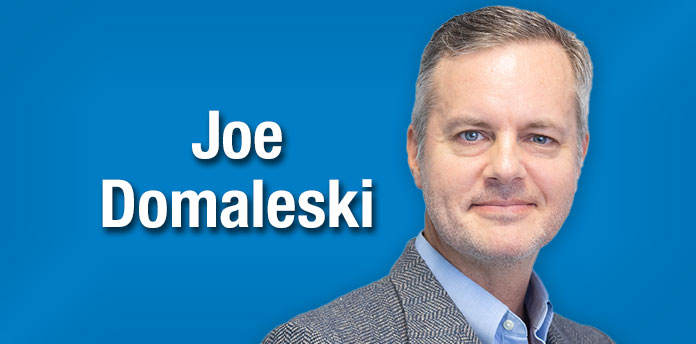If you’ve served in the military, you likely chuckled or smirked upon reading the title of this article. I, too, have vivid recollections of numerous “hurry up and wait” scenarios during my time in the Army. For those of you unfamiliar with the term, allow me to shed some light.
“Hurry up and wait” refers to a situation where soldiers must rapidly prepare for an operation or mission, only to then endure extended periods of waiting due to logistical considerations, coordination with other units, or unforeseen circumstances. This concept mirrors the essence of military operations, where bursts of frenzied activity can be trailed by prolonged periods of idleness.
This concept is not confined to soldiers alone; it resonates across numerous industries and pursuits. Within the film industry, “hurry up and wait” characterizes the whirlwind nature of shooting schedules. Cast and crew members often find themselves immersed in bursts of intense activity while filming, followed by intervals of waiting for equipment setups, scene changes, or other behind-the-scenes necessities.
Here are some additional examples of “hurry up and wait” from a consumer’s point of view:
- Restaurant reservations
- Healthcare services
- Travel industry
- Amusement parks
- Retail check-out lines
- Customer service / technical support calls
- Construction and home services
- Real estate transactions
“Hurry up and wait” can also occur within a business:
- Project management
- Product/software development
- Marketing campaigns
- Recruiting & hiring
- Budget approval
- Sales approval
- Technology implementation
- Legal and contract processes
- Office renovations
- Slow-moving leadership
Many times, “hurry up and wait” can’t be avoided due to regulatory approvals, supply chain issues, environmental factors, weather delays, global events, or complex dependencies. However, more often than not, effective leadership can make “hurry up and wait” avoidable.
I’m not advocating for impatience on the part of leadership, but I would suggest that leaders develop a keen sense of time passage from the perspectives of both customers and employees. Here are some ways in which a leader can minimize the impact of “hurry up and wait”:
- Provide clear communication – Keep stakeholders (customers and employees) informed to manage expectations. Transparency reduces confusion and frustration, helping individuals grasp the bigger picture.
- Plan and anticipate – Develop plans and contingencies in advance. Knowing critical path dependencies enables the creation of alternative plans. If unfamiliar with the term, look up “critical path.”
- Prioritize – Ensure everyone understands priorities; it’s a fundamental role of a leader. Focus on tasks achievable during waiting periods.
- Reallocate resources – Rarely do things go precisely according to plan or forecast. Businesses can utilize downtime for training, especially cross-training. Allocate staff and resources based on demand spikes.
- Multi-task – Despite conventional wisdom to the contrary, multitasking is part of life. Life’s demands often require handling multiple tasks simultaneously. Learn to manage it effectively while giving proper attention to each. Try cooking dinner without multi-tasking, unless you’re using a crockpot it can’t be done. Life works much in the same way. Know when to give proper attention to specific things.
- Stay flexible – The “hurry up and wait” phenomenon leads to change. Be adaptable, avoiding over-attachment to specific technologies or vendors. Always have options and be flexible enough to use them.
- Maintain morale – “Hurry up and wait” can cause demotivation. Regularly update customers and employees with realistic, optimistic information. Avoid excessive optimism that may come across as insincere.
- Revise processes – Take notes and identify ways to reduce bottlenecks that cause “hurry up and wait.” Sometimes, indecisive leadership contributes to these bottlenecks.
A key function of a leader is to set the tempo and priorities of work. Don’t squander the time available with indecision. In the military I was taught the “1/3 – 2/3 Rule”.
Leaders should spend no more than 1/3 of the time allocated for a mission or project on the planning phase. The other 2/3 is devoted to individuals and teams working.
Remember that and don’t cause a sprint to the finish because of poor planning. Remember and always consider the passage of time as experienced by your customers and employees.
No one likes to wait. Rushing and then waiting aka “hurry up and wait” is especially frustrating for customers and employees. Effective leaders should strive to reduce the negative impact of “hurry up and wait”. By fostering clear communication, strategic planning, and a culture of adaptability, leaders can minimize “hurry up and wait”. Leaders, once you have all of the resources and facts needed, don’t be afraid to make decisions. Decisive leaders makes decisions that allow their people to get things done.
[Joe Domaleski, a Fayette County resident for 25 years, is the owner of Country Fried Creative – an award-winning digital marketing agency located in Peachtree City. His company was the Fayette Chamber’s 2021 Small Business of the Year. Joe is a husband, father of three grown children, and proud Army veteran. He has an MBA from Georgia State University and enjoys sharing his perspectives drawing from thirty years of business leadership experience. ]









Leave a Comment
You must be logged in to post a comment.